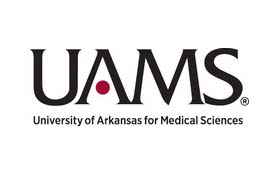National report gives high marks to UAMS’ kidney, liver transplant program
January 25-31, 2021
By Daily Record Staff
The University of Arkansas for Medical Sciences’ kidney and liver transplant programs received high national rankings in biannual data released Jan. 5 by the Scientific Registry of Transplant Recipients.
The SRTR evaluates the status of the nation’s solid organ transplant system and publicly releases the data every December/January and June/July at the directive of the U.S. Department of Health and Human Services.
The registry gave the UAMS kidney transplant program five bars – the highest ranking possible – in two categories: the speed of obtaining donor kidneys and patient survivability one year after transplant.
That places UAMS second, based on volumes and outcomes, on a list of national kidney programs with five-tier rankings. Only a handful of transplant centers across the country hold five bars in both categories.
UAMS’ liver transplant program scored four bars in each of the two categories. It is one of only 10 liver transplant centers across the country that scored four bars or higher in both categories. UAMS Chancellor Dr. Cam Patterson, called the results “a tremendous accomplishment for both transplant programs, and a great way to start the new year.”
There are 256 kidney transplant programs and 147 liver transplant programs across the country. UAMS’ kidney transplant program has been operating since 1964, while its liver transplant program began in 2005. They are the only kidney and liver transplant programs available in Arkansas.
The SRTR reports, which compare each program’s overall score against the national average, provide information about the candidates awaiting transplants, how quickly they moved up the waiting list, the transplant recipients, the donors and the post-transplant outcomes. They also document organ function and survivability one year after each transplant and compare those results to the expected outcomes. UAMS mails reports to every patient in its transplant programs, officials said.
Concerning organ procurement organizations, or OPOs, the Arkansas Regional Organ Recovery Agency (ARORA) was listed among the lowest ranking organ donation agencies in the nation by SRTR in the areas of organ donation and transplantation rates, yields and conversion rates, especially among African Americans. ARORA is among the 57 OPOs in the U.S. that are responsible for working with donor hospitals to help place donor organs for transplant.
Under new rules finalized by the Trump administration in November to improve and reform the nation’s OPO system, ARORA could be decertified or merged into another agency if it cannot improve its standing among the worst-performing organ donation agencies in the U.S.
Among many things, those regulations are aimed at dramatically improving care for patients with chronic kidney disease and end-stage renal disease and reforming the nation’s OPO system, which is responsible for administering U.S. waiting list for live-saving organs such as hearts, livers, pancreas, kidneys, and lungs.
Nationwide, kidney disease was the ninth-leading cause of death in the U.S. in 2017. Nearly 37 million Americans have chronic kidney disease and more than 726,000 have ESRD. More than 100,000 Americans begin dialysis each year to treat renal failure. Today, there are nearly 100,000 Americans are on the waiting list to receive a kidney transplant.
Under the new rules expected to finalize in February, CMS has estimated the U.S. could increase the number of organs available for transplant by 5,600 per year and that the annual number of transplants performed could increase from approximately 33,000 to 41,000 by 2026. There are currently about 109,000 people on the nation’s organ donor waiting list, including 256 in ARORA’s service area.
CMS is replacing the existing OPO quality measures with two new standards and implementing new performance metrics based on objective data. The first new measure is a donation rate tool based on the number of organs an OPO has procured from eligible donors in a specific service area. That proposal also ensures OPOs pursue all potential donors, even those only able to donate one organ, CMS officials said.
The second measure no longer allows OPOs to get credit for merely procuring an organ from a deceased donor without it being transplanted, an area that ARORA has fallen short for several years, CMS data shows. The new performance scale also creates an incentive for OPOs to transplant and use all viable organs. Once the new rules are promulgated in nearly two years, underperforming OPOs will compete for their organizational contracts – which are necessary for them to function as OPOs. The worst performers, CMS said, will be unable to renew their contracts.
Each program-specific report for UAMS and ARORA is available online at www.srtr.org.



